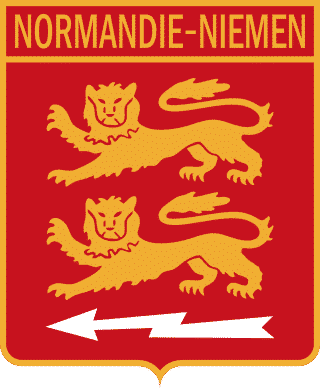Uncategorized
The Neu-Neu or Normandy-Niemen Hunting Regiment
When a French air unit is given a name different from the regulatory “Fighting Squadron”, it is often because the history of the unit is extraordinary enough to deserve it. This is the case with the Stork Hunting Group, the story of which is told here . This is also the case of the Normandie Niemen Hunting Regiment.
Creation:
During the Second World War, after the French defeat and the establishment of the French state in Vichy, General De Gaule chose to form a government and continue to fight alongside the allies from London. When Hitler attacks the Soviet Union, effectively breaking the German-Soviet non-aggression pact, the allies agree with Hitler that the Russians will quickly collapse. This is not the opinion of De Gaule who wishes to participate in the fighting in the east (needing international recognition, he thus seizes the opportunity given to him to establish relations with a country which has just sent back all the Vichy diplomats). He decides to create a unit of the Free French Air Force: Fighter Group No. 3. The first commander of the group, Joseph Pouliquen proposes the name of the Normandy region. (Alsace and Ile de France constituted GC1 and 2). The group is made up of 3 squadrons: “Rouen”, “Le Havre” and “Cherbourg”.

Badge of “Normandy”
14 pilots and 58 mechanics landed on November 29 at the Ivanovo base north of Moscow via Lebanon, Iraq and Iran. The training begins on the plane chosen by the French pilots, the Yak…while English and American planes were proposed…which goes straight to the heart of their hosts. Soviet mechanics (a dozen) join the unit. In March 1943, the “Normandie” was deemed fit to join the front. It is the only Western unit that fights alongside the Russians for the duration of the war.

French mechanics at work on a YAK
Countrisides
The first engagement of the “Normandie” is alongside the First Soviet Army. The skilful and daring French pilots quickly won their first victories and became examples for the other committed aerial cities.
The prestige that the French pilots gain is such that the German Marshal Keitel orders to shoot without any other form of trial any French pilot who would be captured…
The spirit of the pilots, their courage and their skill impressed the Russians. Their taste for romantic stories can only make them appreciate: Tulasne, new commander of the Group, declared dead since 1940 by the Vichy government after simulating an accident to reach London! A true leader and fierce fighter. He performs nearly 100 missions, sometimes flying 3 times a day…he is shot down and dies in combat.

Jean Tulasne aboard his YAK
Pravda, the press organ of the Communist Party, published in June 43 the names of the French pilots decorated for their bravery and on July 14 the French flag was honored by the Russian Army in front of the French pilots.
The role played by the “Normandie” in the battle which allows the Russians to cross the Niemen river is such that Stalin adds the name “Niemen” as is tradition in the Soviet ranks… the Normandie Niemen takes its definitive name and becomes a Regiment.
Later, it was the sacrifice of Lieutenant De Seyne that sealed the Franco-Russian friendship forever. Victim of a fuel leak that prevented him from seeing ahead, unable to land, De Seyne was ordered to parachute. He refuses. Its Russian mechanic, Bielozub is not equipped with a parachute. To abandon him on board would be to condemn him to certain death. De Seyne therefore continues to attempt a blind landing, until he crashes and dies with his mechanic. Stalin then orders to bury the 2 men side by side. The enormous impact of this sacrifice is still taught today in Russian schools as a symbol of the unbreakable bond between the two countries.
On October 16, 1944, the group achieved an exceptional day. It symbolizes the ardor of the Regiment: 100 sorties carried out, 29 aerial victories, no loss…eloquent!
On November 27, the Normandie Niemen was the first non-Russian unit to land in Germany and on December 9 De Gaule welcomed and congratulated the pilots in Moscow in the company of Stalin.
Once the armistice was signed on June 9, 1945, Stalin decided that it would be unfair to disarm a unit that had given so much for victory…he offered the planes to the French who returned to Paris on board their YAKs.

Why NEU-NEU?
The Normandy Niemen Hunting Regiment is affectionately called the Neu-Neu. Odd !
The reason is quite simple: Normandie Niemen, it’s a bit long and quickly, we referred to it by using the acronym NN, especially in writing. But orally, NN is still a bit long and not easy to pronounce in a “fluid” way. However, a French expression (today in voice of disappearance) uses the term of Neu-Neu, easier to pronounce: This expression, it is “the party with Neu-Neu”. It is used to describe chaotic and unorganized situations…what a mess! The mocking spirit that reigns supreme in French fighter units did the rest…the Normandie Niemen is the Neu-Neu!


 Français
Français